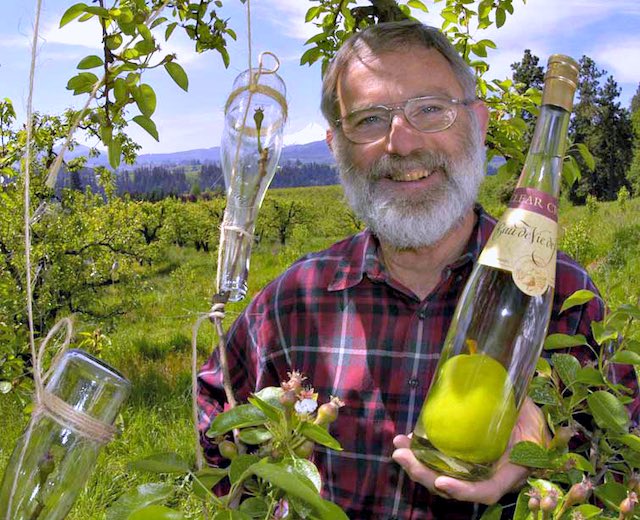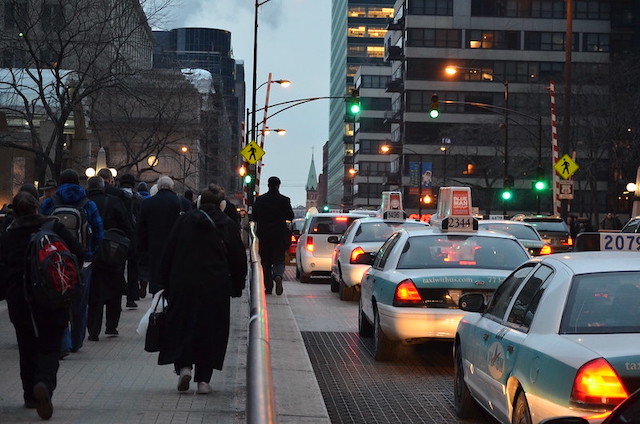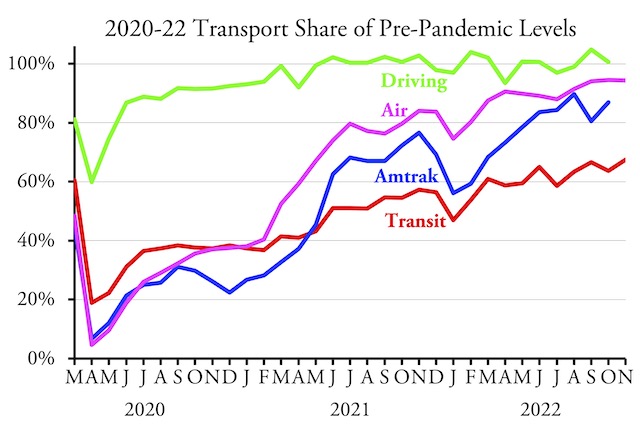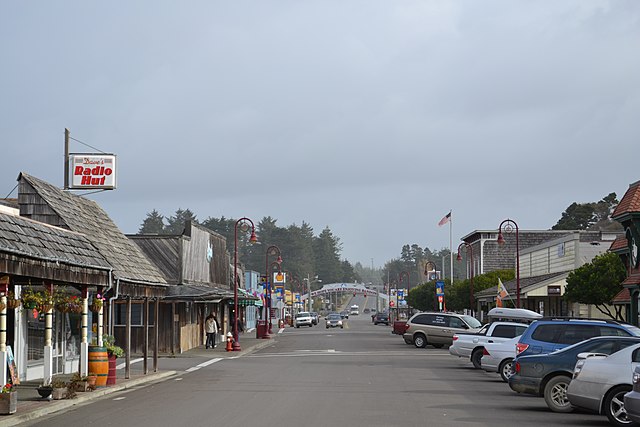My first real job was a summer internship with the Oregon Student Public Interest Research Group (OSPIRG) in 1972. Steve McCarthy was the flamboyant director of OSPIRG, and my work that summer on low-cost ways to improve TriMet, Portland’s transit system, helped propel him into the job of TriMet’s general manager. He implemented some of my suggestions and made other improvements and by the end of the decade Portland was one of the few urban areas in America where transit ridership had grown faster than driving.
Steve McCarthy growing pears in bottles that will soon be filled with Clear Creek pear brandy. Photo courtesy of Clear Creek Distillery.
Nearly two decades later, Steve invited me out to lunch in Northwest Portland where he had started a new business making pear brandy. Over lunch, he told me that after leaving TriMet he took over his father’s business making hunting accessories and then bought a pear orchard in Oregon’s Hood River Valley, where his family had been in the fruit-growing business since 1910. He wanted to prove to other orchardists that they could make more money by adding value to their fruit than by just selling fruit to grocers. Continue reading












